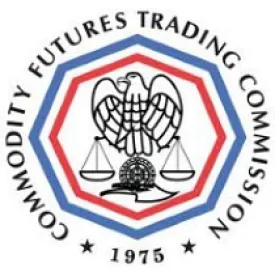On September 15, the staff of the Commodity Futures Trading Commission’s (CFTC) Division of Clearing and Risk (DCR) and Division of Swap Dealer and Intermediary Oversight (DSIO) issued CFTC Letter No. 20-28, providing supplemental guidance and further no-action relief with respect to the treatment of separate accounts by futures commission merchants (FCMs). Initial guidance and relief was set out in CFTC Letter No. 19-17, which was issued in July 2019.
As reported in the July 12, 2019 issue of the Corporate and Financial Weekly Digest (available here), Letter No. 19-17 was issued in response to two Regulatory Alerts that had been published by the Joint Audit Committee (JAC) with regard to the treatment of separate accounts maintained on behalf of the same underlying customers. The JAC Regulatory Alerts and Letter No. 19-17 dealt with two issues: (1) interpretation of CFTC Regulation 1.56; and (2) compliance with CFTC Regulation 39.13(g)(8)(iii).
CFTC Regulation 1.56
CFTC Regulation 1.56(b) provides that no FCM may: (1) directly or indirectly guarantee a client against loss; (2) limit the loss of a customer; or (3) agree not to call for margin as established by the rules of an exchange. Further, Regulation 1.56(c) provides no person may in any way represent that FCM will engage in any of the acts or practices described in Regulation 1.56(b). In Letter No. 19-17, the staff confirmed that Regulation 1.56(b) prohibits an FCM from agreeing to include in a customer agreement so-called limited recourse provisions, which may restrict the ability of an FCM to look to other accounts of a customer, even if those accounts are controlled by another asset manager. As the staff made clear, an FCM “must retain the ability to ultimately look to funds in other accounts of the beneficial owner, including accounts that may be under different control, as well as the right to call the beneficial owner for additional funds.”
In Letter No. 20-28, the CFTC staff again confirmed that contractual provisions that violate, or may be construed to violate, Regulation 1.56(b) are prohibited. However, in response to a request filed by the Futures Industry Association, which noted that, as a result of the COVID-19 Pandemic, many FCMs have encountered difficulties in (1) identifying those customer agreements that may contain provisions that are inconsistent with the terms and conditions of the Letter No. 19-17, and (2) working with their customers to amend such agreements, the staff provided time-limited no-action relief. Under the no-action relief, FCMs will have until March 31, 2021 to remove or otherwise negate the limited recourse provisions contained in customer agreements. After March 31, 2021, no new customer agreement, including a master agreement that adds a new beneficial owner, may contain provisions, or may be construed to contain provisions, that are prohibited by Regulation 1.56.
The staff also took the opportunity to provide further guidance with respect to the interpretation of Regulation 1.56. First, the staff clarified that Regulation 1.56 does not require a customer agreement to contain any specific or express language in order for an FCM to meet the requirements of the regulation. A customer agreement would comply with the requirements of Regulation 1.56, as long as the agreement does not contain (or incorporate by reference) language that can be construed as a representation that the FCM agrees to any of the terms prohibited by the regulation. The agreement is not required to include additional provisions regarding the FCM’s rights against the beneficial owner under such an agreement.
Second, the staff confirmed that an FCM and its customer may agree to a protocol, identifying a specific series of defined steps that an FCM could follow “before resorting to liquidation or accessing the funds in the other accounts of the beneficial owner held at the FCM”. However, the staff emphasized that the FCM must retain “at all times, the discretion to determine that the facts and circumstances of a particular shortfall are extraordinary and therefore necessitate accelerating the timeline and relying on the FCM’s protocol for liquidation or for accessing funds in the other accounts of the beneficial owner held at the FCM.”
Lastly, the staff noted that certain FCMs might choose to rely on the applicable law and severability provisions found in most FCM customer agreements to negate the limited recourse provision in a particular agreement. The staff stated that such reliance would be permissible only if the FCM obtained, by March 31, 2021, “legal Opinion(s) or well-reasoned memorandum(a) from outside counsel confirming that its customer agreements do not contain provisions that violate Regulation 1.56. Further, to the extent that the language used in an agreement could be construed to be in violation of Regulation 1.56, any such violation would be cured if the FCM promptly, but in any event no later than March 31, 2021, sends a written disclosure to the beneficial owner (1) describing the requirements of Regulation 1.56, and (2) explaining that the FCM is relying on the operation of the applicable law and severability provisions in the agreement to comply with the regulation.
CFTC Regulation 39.13(g)(8)(iii)
CFTC Regulation 39.13(g)(8)(iii) provides that each derivatives clearing organization (DCO) must require its clearing members to assure that their customers do not withdraw funds from their accounts with such clearing members, unless the net liquidating value, plus the margin deposits remaining in the customer’s accounts after the withdrawal, would be sufficient to meet the customer initial margin requirements with respect to the products or portfolios in the customer’s account cleared by the DCO. In its Regulatory Alert, the JAC advised that, although separate accounts of the same beneficial owner may continue to be margined separately, the FCM must combine all accounts of the same regulatory classification — even those under different control — to assess whether it may release excess funds from one account of a beneficial owner.
In Letter No. 19-17, the CFTC staff provided no-action relief with respect to Regulation 39.13(g)(8)(iii), subject to compliance with the terms and conditions set out in the letter. The no-action relief would extend to June 30, 2021, “in order to provide Staff with time to recommend, and the Commission with time to determine whether to conduct, and if so, to in fact conduct, a rulemaking to implement appropriate relief on a permanent basis.”
In Letter No. 20-28, in response to the COVID-19 Pandemic, granted FCMs until March 31, 2021 to come into compliance with all of the terms and conditions set out in Letter No. 19-17. Further, the staff extended the term of the no-action relief to December 31, 2021.
A copy of the CFTC’s release with a link to CFTC Letter No. 20-28 is available here.




 />i
/>i

